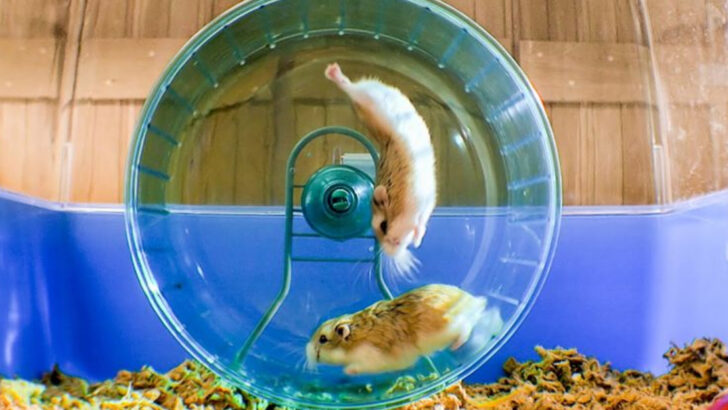Your pet isn’t broken—just weird in all the right ways. Ever catch your dog spinning like a furry tornado before lying down? Or your cat randomly sprinting through the house like it’s being chased by ghosts? These aren’t glitches in the system. They’re surprisingly normal—and often have roots in instinct, biology, or just plain quirky personality. From butt-dragging across the carpet to barking at absolutely nothing, animals have a way of keeping us confused, entertained, and occasionally concerned. But what seems bizarre to us often makes perfect sense to them. Let’s unravel the mystery behind 12 pet behaviors that look strange—but are totally normal once you know what’s really going on.
Cat Kneading
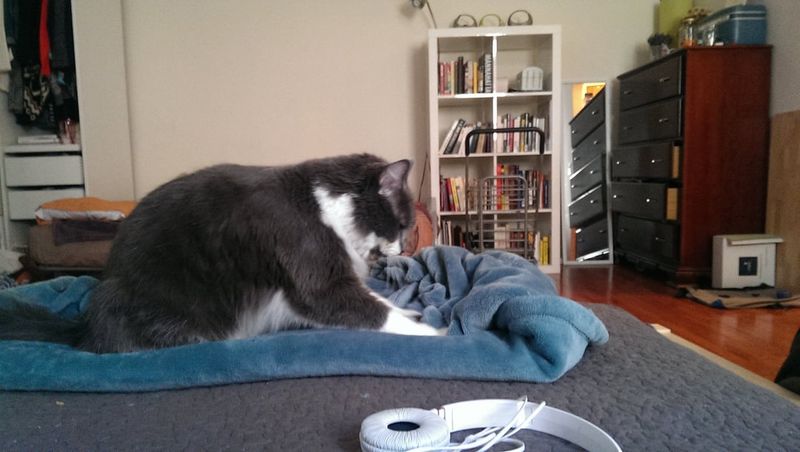
Have you ever noticed your cat rhythmically pressing its paws against a soft surface? This endearing habit, known as kneading, is reminiscent of a baker working dough. But why do cats knead? Kittens knead their mothers to stimulate milk flow, and this comforting behavior often continues into adulthood. Many experts believe adult cats knead as a sign of contentment or to mark their territory with scent glands located in their paws.
Did you know that some cats purr while kneading? This combination creates a soothing symphony that can be quite calming. It’s a peculiar yet completely normal behavior for felines.
Dog Tail Chasing

Is there anything more delightfully amusing than watching a dog chase its own tail? While it might seem like a silly game, tail chasing is a common behavior among dogs, especially puppies. Young dogs often chase their tails out of curiosity or boredom, exploring their own bodies in the process.
In some cases, tail chasing can be a sign of anxiety or medical issues, but it’s usually just a normal, playful activity. Keeping your dog mentally and physically stimulated can reduce excessive tail chasing. Remember, a happy dog is often an active one!
Bird Feather Plucking
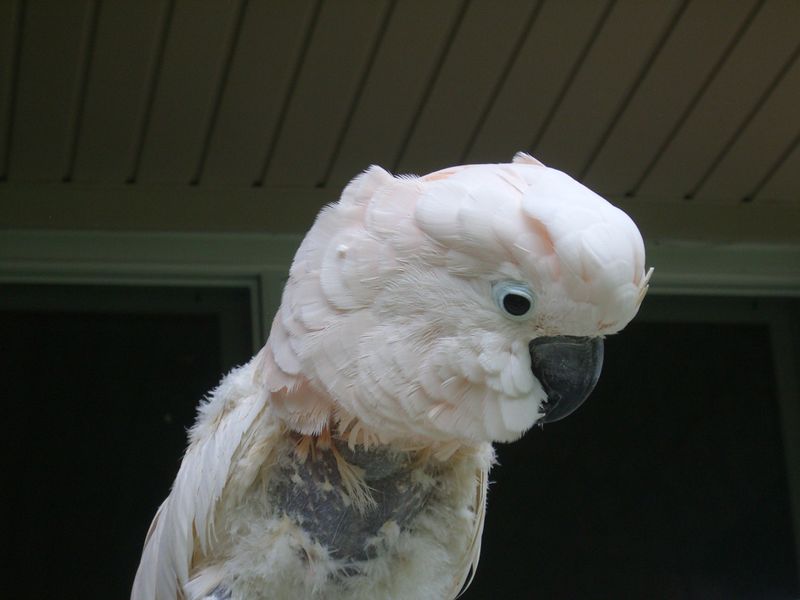
Feather plucking in birds can be puzzling and concerning for pet owners. It involves birds, especially parrots, pulling out their own feathers. This behavior can be a normal part of preening, where birds remove damaged feathers to make room for new growth. However, excessive plucking may indicate stress, boredom, or health issues.
Ensuring a stimulating environment with toys and social interaction can help reduce stress. Consulting a vet is advisable if the behavior persists. Feather plucking, while seemingly strange, is a behavior that requires careful observation to discern its cause.
Hamster Wheel Running
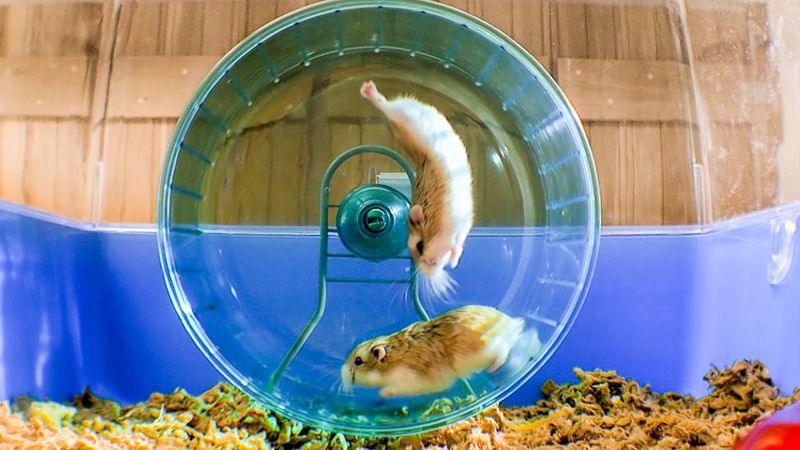
Hamsters are known for their love of running on wheels. While this may seem like a repetitive and tiresome activity, it’s actually quite normal. In the wild, hamsters can travel several miles in search of food. The wheel provides them with an outlet for their instinctual need to run and explore.
Running on the wheel keeps hamsters fit and prevents obesity. It’s essential to provide a wheel that is the right size to prevent back problems. This normal behavior is a testament to their energetic and adventurous nature.
Rabbit Binky
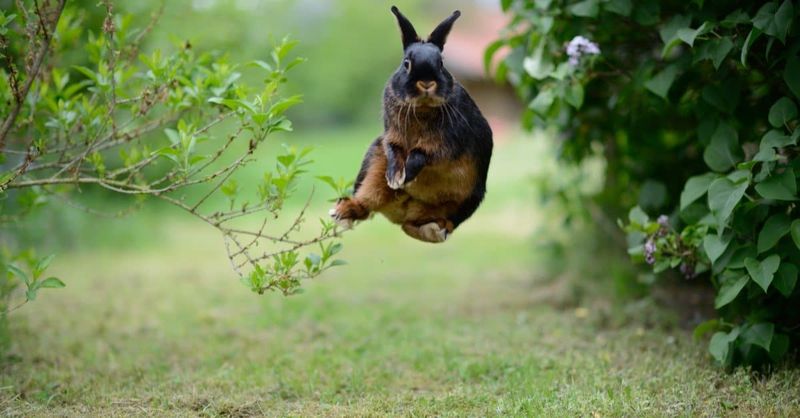
Rabbits are known for their adorable ‘binkies’ – spontaneous leaps and twists in the air. This joyful behavior often surprises and delights rabbit owners. A binky is usually a sign of a happy and healthy rabbit, expressing excitement and contentment.
These playful leaps are more than just physical activity; they are a form of communication showing that the rabbit feels safe and secure in its environment. Witnessing a rabbit binky is truly a heartwarming sight and a testament to the rabbit’s spirited personality.
Dog Head Tilting

When a dog tilts its head while you talk, it can melt even the coldest of hearts. This charming behavior is not just for show; it’s believed that dogs tilt their heads to better understand sounds and human speech.
By adjusting their head position, they may be trying to locate the source of a sound or capture subtle nuances in your voice. It’s a delightful behavior that showcases their attentiveness and desire to connect with their human companions.
Cat Head Bunting
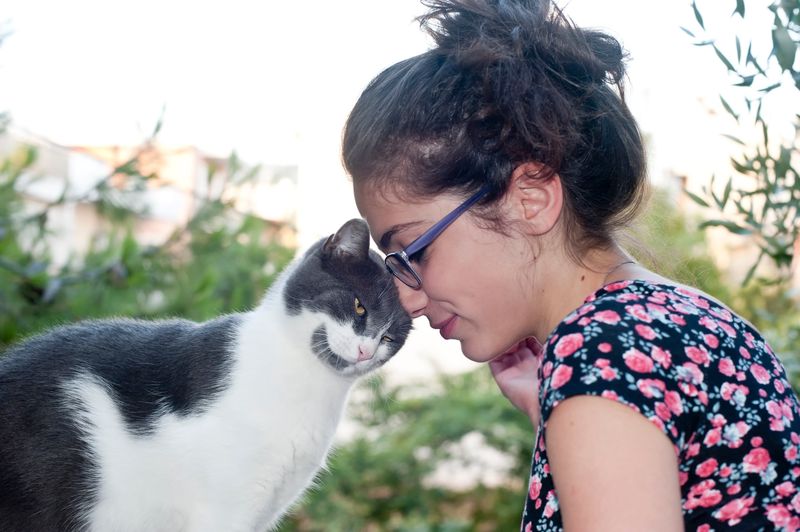
Head bunting is a curious behavior where cats gently bump their heads against people or objects. This affectionate gesture is not only a sign of love but also a way for cats to mark their territory. Scent glands located on their heads release pheromones, leaving a signature scent behind.
This behavior strengthens the bond between cats and their owners, serving as a form of feline greeting. A head bunt from a cat is a heartwarming expression of trust and familiarity.
Guinea Pig Wheeking
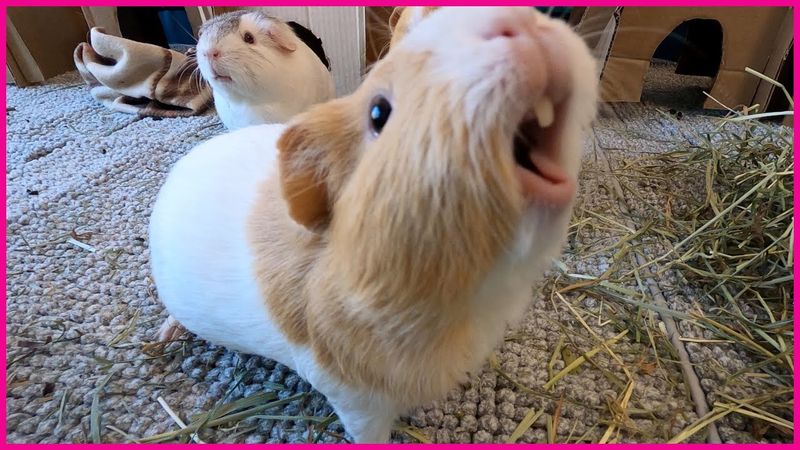
Listeners are often startled by the loud wheeking sounds made by guinea pigs. This vocalization is a normal and endearing form of communication, especially when anticipating food.
Guinea pigs use wheeking to express excitement or to capture their owner’s attention. This behavior is a testament to their social nature and their reliance on humans for sustenance. Providing a varied diet and social interaction keeps them engaged and reduces excessive wheeking.
Ferret War Dance
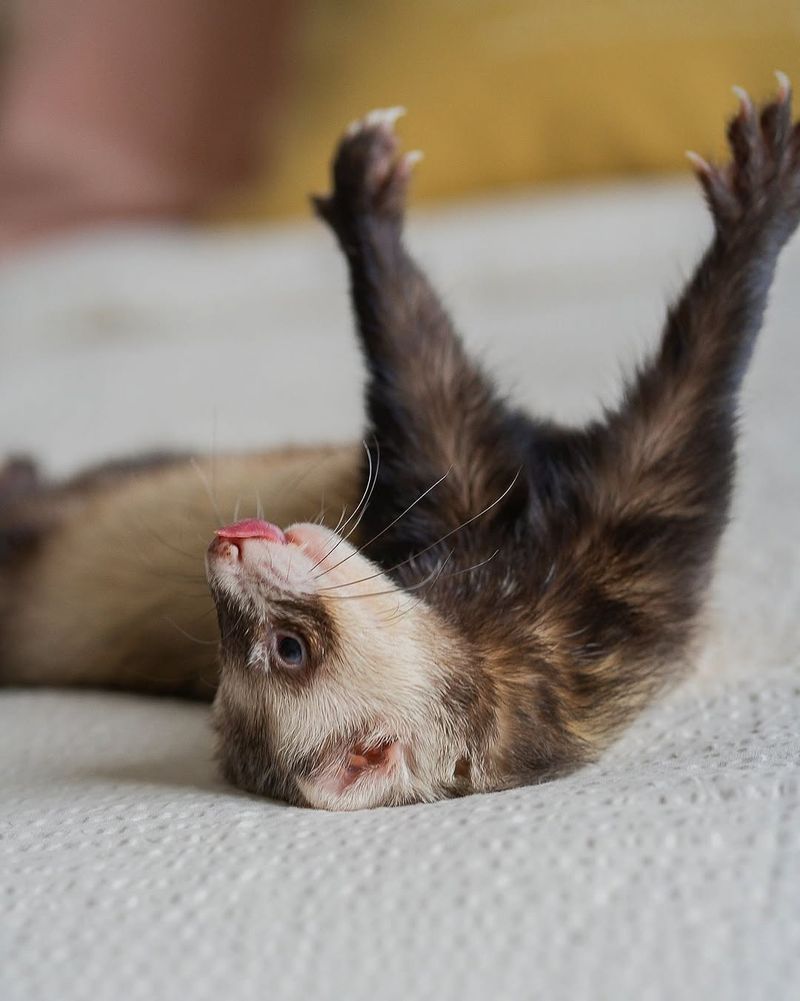
Ferrets exhibit a peculiar behavior known as the ‘war dance,’ characterized by frenzied hopping, arching of the back, and playful nipping. Though it may appear aggressive, it’s actually a sign of excitement and playfulness.
This behavior is often triggered during playtime or when a ferret is feeling particularly frisky. Providing a safe and engaging environment encourages healthy play behavior. The war dance is a delightful display of a ferret’s energetic and carefree nature.
Dog Butt Sniffing

While it might seem awkward to humans, butt sniffing is a perfectly normal way for dogs to gather information. Through scent, dogs can learn about each other’s diet, emotional state, and more. It’s their version of a handshake.
This behavior is a crucial part of canine communication and socialization. Allowing dogs to sniff can help them feel more comfortable and establish a sense of familiarity.
Horse Flehmen Response
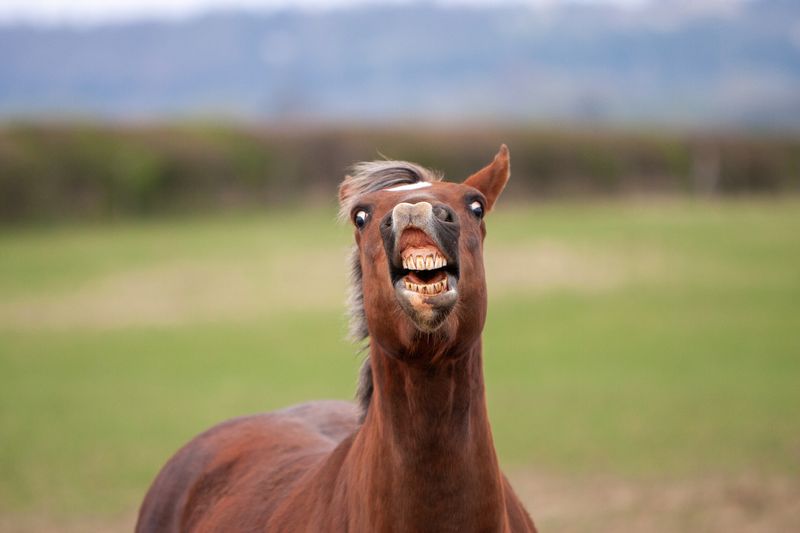
If you’ve seen a horse curl its upper lip and hold its head high, you’ve witnessed the flehmen response. This behavior allows horses to analyze scents, especially pheromones, through a specialized organ.
Horses often exhibit this behavior around unfamiliar smells or when investigating other horses. It’s an intriguing and completely normal part of their social and exploratory behavior.
Cat Zoomies
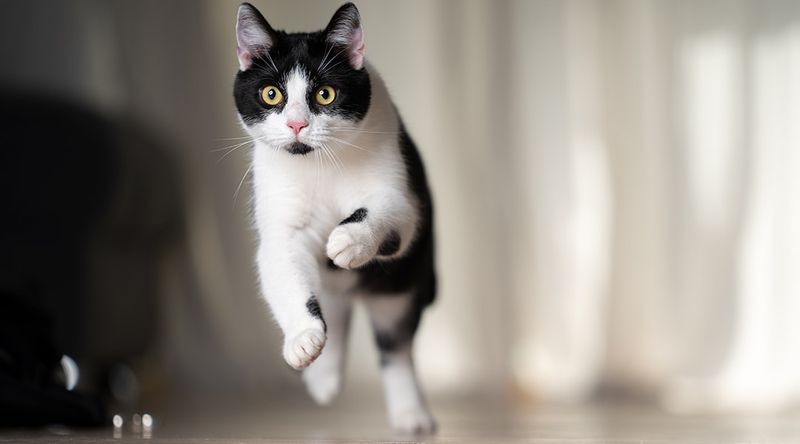
Cats sometimes experience sudden bursts of energy, known as ‘zoomies,’ where they race around with seemingly boundless enthusiasm. This behavior often occurs after a long nap or during playtime.
Zoomies help cats burn off excess energy and are a sign of a well-adjusted feline. Providing plenty of play opportunities and mental stimulation can keep zoomies in check, ensuring a happy and healthy cat.

